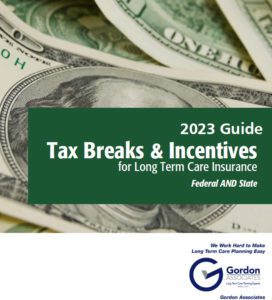We typically think of inflation as something that’s slow and steady–and, therefore, easy to plan around. That’s not the case with long term care costs. Over the last twenty years, long term care costs have risen at a rate faster than some income sources have kept up with.
That presents a unique challenge, as many of these costs are largely unavoidable: from nursing home care to emergency surgery, covering these costs is essential for maintaining the health and wellness of aging individuals.
Whether your income is fixed or flexible, including these rising costs in your financial plan can help keep you solvent as you age. And for many, Long Term Care Insurance will provide a necessary hedge against rising long term care costs.
Fixed Sources of Income
Most seniors rely on fixed sources of income such as pension funds or social security payouts. That can make covering unexpected or increasing costs challenging. In theory, that’s something that social security’s cost of living adjustment (COLA) is designed to help with. Every year, the federal government increases social security payouts.
But between the years of 2004 and 2021, social security payouts increased an average of only 2.2%, far too low to cover the rising costs of long term care (see below).
That’s because social security cost of living adjustments are directly tied to inflation, as calculated by the federal government in its Consumer Price Index (CPI) figures. As CPI in most areas over the same time frame reflected general inflation of 1.9%, it’s not surprising that most COLA adjustments are immediately eaten up by inflation of everyday costs, such as groceries, fuel, and rent.
For better or worse, that’s the way the system is designed to work.
Can You Find Additional Income?
For those on a fixed budget, additional sources of income can help add a degree of flexibility and give into your finances. When unexpected long term care costs pop up, being able to tap into additional retirement accounts or state programs can help you make ends meet.
How much help you can expect from these additional sources of income will vary considerably from individual to individual–it may depend on your age, the state you live in, and your overall health.
Rising Costs
For far too many, however, a fixed income means there’s little leftover to cover rising long term care costs. And those costs are rising–significantly. According to the Genworth Cost of Care Study, here’s how annual mean costs rose from 2004 to 2020:
- Private room in a nursing home in 2004 was around $65,000. In 2020, those costs skyrocketed to over $105,000. That’s an increase of over 62%.
- Assisted living facility cost in 2004 was just under $29,000. In 2020, the cost was closer to $60,000, an increase of nearly 80%.
- Home Care Home Health Aid in 2004 would cost around $42,000 annually. In 2020, that number had increased to just under $55,000, an increase of roughly 30%.
- Home Care Homemaker services in 2004 averaged $38,095 annually. In 2020, that number had increased to almost $54,000, an increase of 41.14%.
This doesn’t take into account other long term care expenses that may pop up: new medications, extra medical procedures, and so on. It’s easy to see how these costs can stack up quickly and become a significant financial burden.
Life Expectancy Increases
Inflation isn’t the only reason that long term care costs are harder to anticipate. Costs are also rising for a positive reason: people are living longer. In 2004, life expectancy averaged 77.6 years. In 2019, the number had increased by over a year, to 78.9
To be sure, the COVID-19 pandemic has shifted the trend. But once COVID-19 peaks, it’s likely that life expectancy will go back to rising annually.
On the plus side, this means that your retirement will likely be longer. But it also means you should expect to incur expenses over a longer duration. If you end up in assisted living, for example, you should count on paying that rent over a longer period of time.
What Should You Do to Plan for Long Term Care Costs?
These numbers are general, of course. Your financial situation may vary depending on your age, location, or occupation. But what’s generally true is this: many seniors wind up squeezed between these increasing costs and their fixed income.
But there are solutions, especially on an individual basis.
- The first step is to be realistic about what your COLA increases will cover and what they won’t–especially if you’re still planning your later years. Typical inflation is going to eat up most of your social security “raises,” so you shouldn’t count on COLAs to cover your long-term care costs.
- And because long term care costs continue to rise, you may need to plan on additional income to help you handle those expenses. That’s why it’s essential to incorporate rising long term care costs in your financial plan.
It’s not enough to know how much a nursing home room may cost today–you need to be able to anticipate what that same room will cost in ten or twenty years.
Make a Financial Plan That Includes Long Term Care Insurance
Over 66% of individuals will have a long term care event over the course of their lifetime. So sit down with your financial planner and ensure you prepare accordingly. Your financial planner should have an estimate of how much you’ll need to save to cover rising long term care costs and what you might be able to do to meet those goals.
If your finances are looking good and healthy, you may also consider investing in Long Term Care Insurance. Stand-Alone “Traditional” and Hybrid Asset-Based Life and Annuities with LTCI Riders can protect your assets and provide peace of mind when/if you need care. It can help you handle some of the unexpected and surprising costs associated with a long-term care incident. You can also select the right type of LTCI for your needs.
Long term care costs are probably not going to start going down anytime soon. This can leave you feeling like you have a gap in your financial plan–like you’re one bad break away from financial disaster. Long Term Care Insurance can help close that gap–and give you some peace of mind, too.
If you want to talk to an expert about Long Term Care Insurance, contact us today!


 To help determine if long-term care (LTC) insurance is right for you, we are offering a FREE informational guide. This is a comprehensive booklet that will answer many of your questions about tax breaks and incentives for LTCI for federal and state taxes.
To help determine if long-term care (LTC) insurance is right for you, we are offering a FREE informational guide. This is a comprehensive booklet that will answer many of your questions about tax breaks and incentives for LTCI for federal and state taxes. To help determine if long-term care (LTC) insurance is right for you, we are offering a FREE informational guide. This is a comprehensive booklet that will answer many of your questions about LTC and assist you with your health care planning.
To help determine if long-term care (LTC) insurance is right for you, we are offering a FREE informational guide. This is a comprehensive booklet that will answer many of your questions about LTC and assist you with your health care planning.